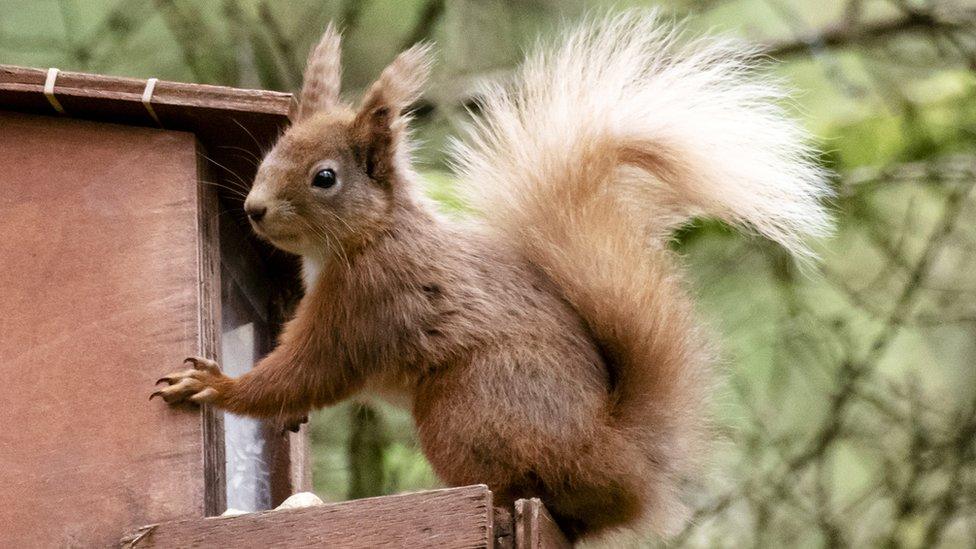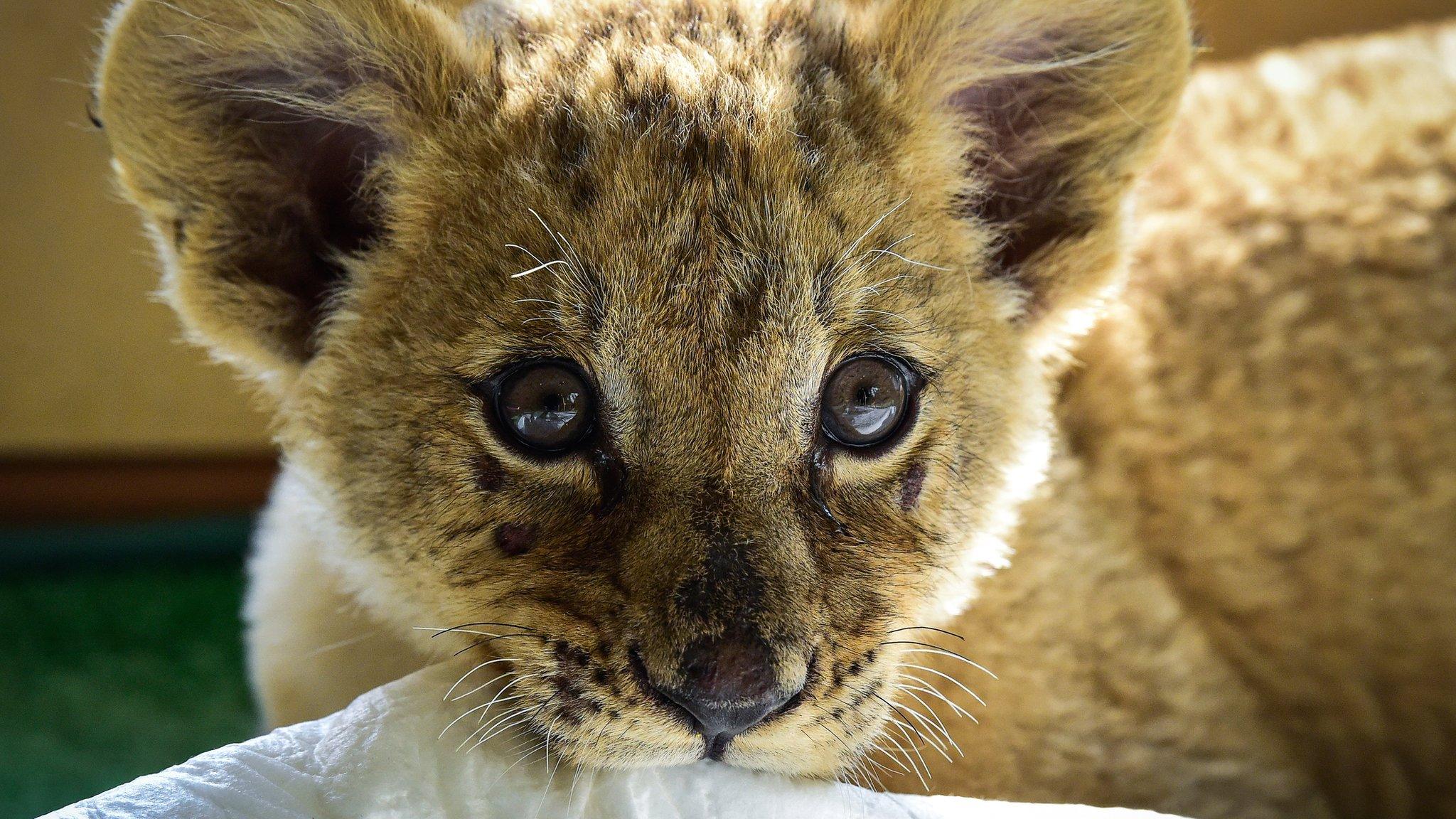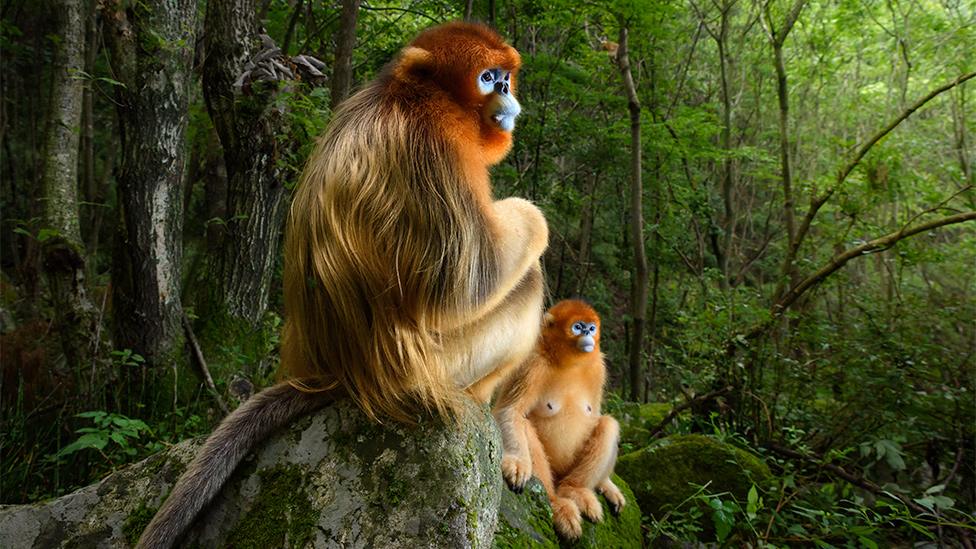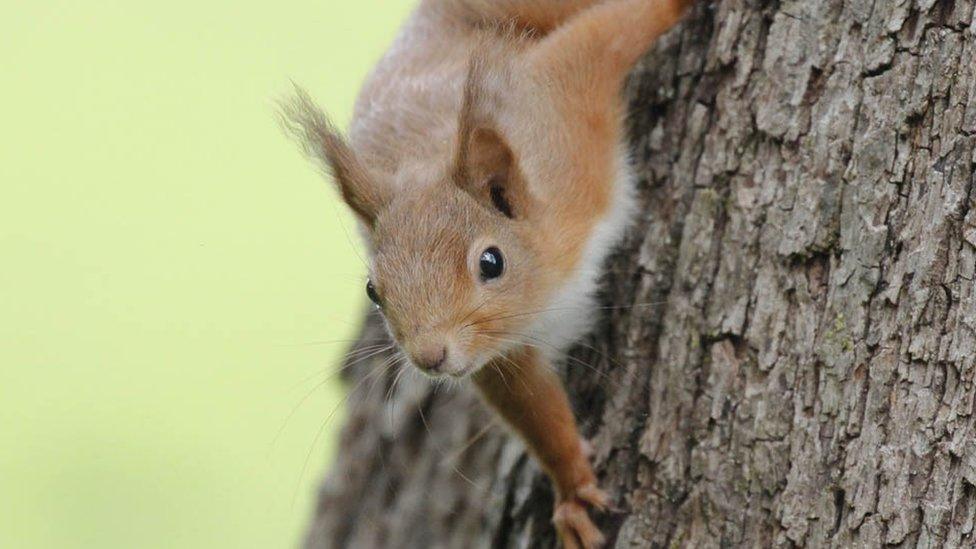Red squirrel DNA discovery in Ceredigion 'could help conservation'
- Published

Red squirrels numbers in the UK fell from about 3.5 million in the 1870s to between 120,000 and 140,000 today
A "unique DNA sequence" has been found in red squirrels in Wales which a charity said was a world first.
Hair sample analysis from a feeder box in Llanddewi Brefi, Ceredigion, revealed a new group of genes.
This haplotype, external - found in a single chromosome - shows increased genetic diversity and sheds more light on the animal's ancestry and genetic make-up.
The Wildlife Trusts' Becky Hulme said it showed the area was an "important site" for squirrel conservation.
Hairs were secured by attaching a sticky pad beneath the lid of the feeder so it would lift hairs from red squirrels coming to feast on seeds and nuts.
Results from these samples found two different haplotypes - one was already known in Wales, but the trust said the other "hasn't been recorded anywhere before".
This means there are now five different known haplotypes in the mid-Wales red squirrel population.
The Wildlife Trust of South and West Wales said it was "thrilled" to have found "a unique DNA sequence" which meant the population had a diverse gene pool.
This increases the likelihood of having squirrels more likely to survive in their environment, which could be passed down to their kits when they breed.
Ms Hulme, the red squirrel officer, said: "Without the massive time commitment, initiative and dedication of survey volunteers, none of this data could have been recorded."

What is a haplotype?
It is a group of genes in an organism that is inherited from a single parent.
Scientists can use these to identify genetic variation in species and see which patterns are associated with diseases.
For example, if one haplotype is associated with a particular disease, scientists can examine stretches of DNA to pinpoint the gene or genes responsible for causing it.
- Published26 October 2018

- Published16 October 2018

- Published7 March 2018

- Published24 February 2017
